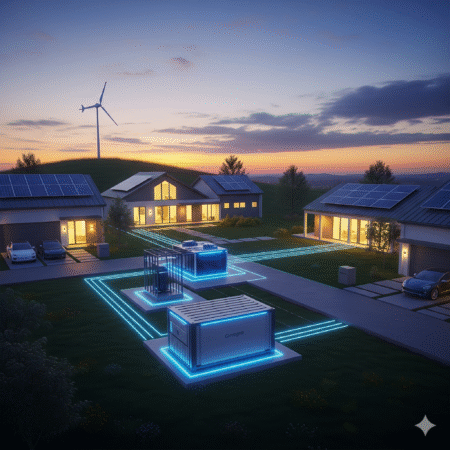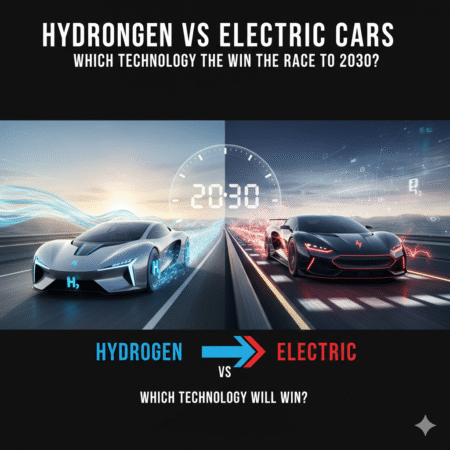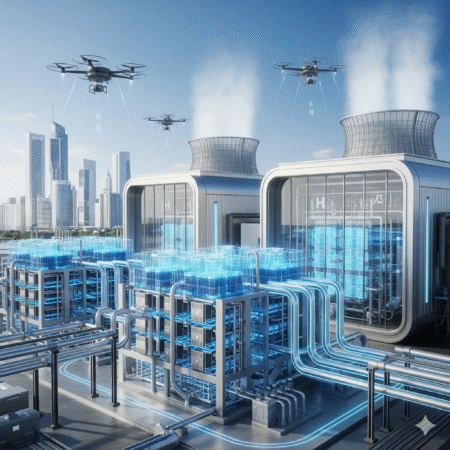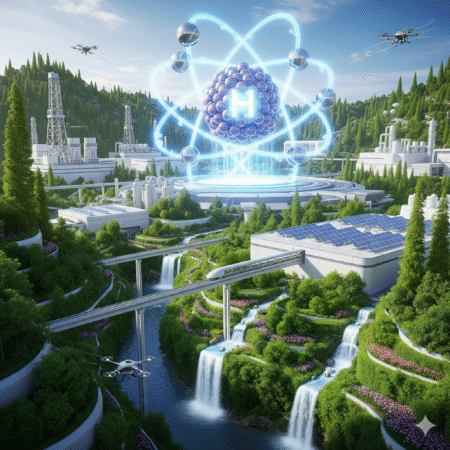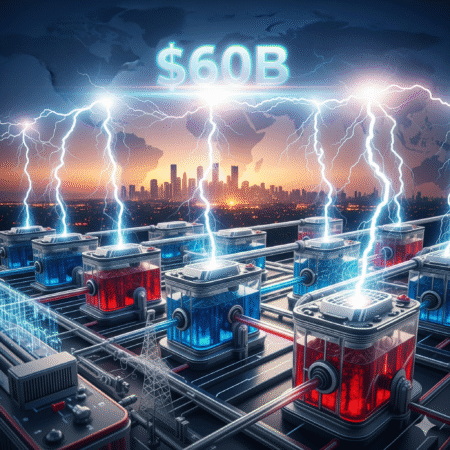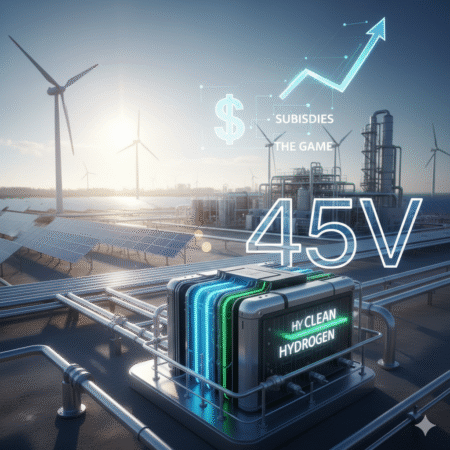
- Introduction – Why Microgrids Matter in 2025
- What Is a Microgrid? (And How It Works)
- Centralized Grid vs. Microgrid – Key Differences
- Benefits of Microgrids for Homes & Communities
- Microgrid Technologies Driving the Change
- Cost of Building a Microgrid: Is It Worth It?
- Challenges & Limitations of Microgrids
- The Future of Microgrids: What’s Next?
- FAQs About Microgrids (Practical & Search-Based)
- Conclusion – Microgrids Are No Longer “What If,” They’re “What’s Next”
Introduction – Why Microgrids Matter in 2025
Let’s be real-energy has never been more critical (or more expensive) than it is today. In 2025, households and businesses across the US, UK, and Canada are facing a double punch: rising utility bills and a growing number of power outages. According to the US Energy Information Administration (EIA), the average American home saw electricity costs jump nearly 20% over the last three years, while in the UK, soaring wholesale energy prices have left families struggling to manage monthly expenses. On top of that, severe storms, wildfires, and extreme weather events are pushing grids to their limits, causing blackouts that leave entire neighborhoods in the dark.
Now, here’s the good news: a quiet revolution is happening. Communities, universities, industrial parks, and even homeowners are no longer relying entirely on centralized utility grids. Instead, they’re adopting microgrids-localized, self-sufficient energy networks that can operate independently when the main grid fails. Think of it as a “mini power plant” tailored to your community or business, capable of blending renewable energy, battery storage, and smart controls.
Why is this such a big deal? Because microgrids aren’t just a tech buzzword anymore. They’re delivering real, measurable benefits:
- Cutting electricity costs by integrating renewables.
- Keeping the lights on during grid failures.
- Reducing carbon footprints with clean energy sources.
- Offering resilience that centralized grids can’t match.
And here’s the kicker: demand is skyrocketing. Research firm MarketsandMarkets projects the global microgrid market to hit $60 billion by 2030, with North America leading adoption thanks to aggressive renewable policies and community-driven initiatives. That means the conversations about energy are no longer just happening in government boardrooms-they’re happening at local town halls, small businesses, and even around dinner tables.
So, why does this matter for engineers, energy professionals, and even everyday consumers? Because microgrids represent more than just a technical solution-they’re a social and economic shift. They’re about taking back control of energy from giant utility companies, ensuring independence, and preparing for a future where resilience matters as much as cost.
In the sections that follow, we’ll break down exactly what a microgrid is, how it works, what it costs, and whether it’s really the solution for your home, community, or business. But first, remember this: in 2025, the question isn’t if microgrids will shape the future of power-it’s how fast they’ll get there.
What Is a Microgrid? (And How It Works)
If you’ve ever thought of the electricity grid as a giant spiderweb, you’re not wrong. The traditional power grid is a massive, centralized system that delivers energy from large power plants through transmission lines to your home or office. It works-most of the time. But when something breaks in the web, the impact spreads fast. That’s why a storm in one city can cause outages hundreds of miles away.
This is where microgrids flip the script. A microgrid is essentially a localized energy network that can generate, store, and distribute its own electricity. Unlike the centralized grid, a microgrid can disconnect from the larger network and run independently-this is what engineers call “islanding.” Think of it as your neighborhood’s private backup plan, or in some cases, a full-time energy solution.
So, how does a microgrid actually work?
- Energy Generation: Microgrids use diverse sources-solar panels, wind turbines, natural gas generators, or even small-scale hydro.
- Energy Storage: Batteries (like lithium-ion or flow batteries) capture excess energy and release it when demand spikes.
- Smart Control System: AI-driven controllers balance supply and demand in real time, deciding when to pull from storage, when to use renewables, and when (if ever) to connect to the main grid.
- Distribution: The microgrid then distributes power locally-to homes, schools, factories, or even an entire town.
Here’s a simple comparison to make it crystal clear:
| Feature | Centralized Grid | Microgrid |
|---|---|---|
| Power Source | Large, centralized power plants | Local renewables, generators, storage systems |
| Control | Managed by utility companies | Local control, AI/automation possible |
| Resilience | Vulnerable to wide-area outages | Can island and keep running during blackouts |
| Flexibility | Limited to utility infrastructure | Highly flexible, modular, and scalable |
| Carbon Footprint | Often fossil-fuel-heavy | Can be 100% renewable depending on design |
What makes microgrids truly exciting is their adaptability. They’re not one-size-fits-all. A hospital microgrid, for example, is designed with redundancy and diesel backup to guarantee uninterrupted care. A rural community microgrid in Canada might run mostly on solar with batteries to cover long winter nights. Meanwhile, a university campus microgrid could blend solar, gas, and wind to cut costs while also serving as a research testbed.
The beauty of microgrids lies in their scale: they can be as small as a single building or as large as an entire town. The key is that they empower local independence while still having the option to plug into the main grid when needed.
In short, microgrids are energy freedom, redefined. They’re not replacing the grid overnight, but they’re giving communities and businesses the tools to stand on their own when the grid falls short.
Centralized Grid vs. Microgrid – Key Differences
To really understand why microgrids are such a big deal, you’ve got to compare them head-to-head with the traditional, centralized grid we’ve all relied on for decades. Think of it like the difference between a landline telephone and a smartphone. A landline works fine-until you move out of range, there’s a power cut, or you need flexibility. A smartphone, on the other hand, is portable, adaptive, and gives you control at your fingertips. That’s the exact same leap microgrids represent compared to the old power grid.
The centralized grid is built on a simple idea: generate power at massive plants, then push it across long transmission lines to millions of consumers. It’s efficient at scale, but it has one major flaw-fragility. A single failure point, whether it’s a storm knocking down lines or a cyberattack on a control system, can ripple out and cause blackouts across entire regions.
Microgrids take a completely different approach. Instead of “one big plant feeding everyone,” they operate like local energy ecosystems. They generate power close to where it’s consumed, often using renewable energy sources, and can store excess electricity in batteries. And if the main grid fails? A microgrid can flip into island mode and keep delivering power, independent of the larger system.
Let’s break it down in a simple comparison:
| Factor | Centralized Grid | Microgrid |
|---|---|---|
| Structure | Central power plants → long transmission lines | Local generation + storage → local distribution |
| Resilience | Vulnerable to outages and cascading failures | Can island and stay operational during blackouts |
| Energy Source | Mostly fossil fuels, some renewables | Often renewable-heavy, backed by storage/generators |
| Flexibility | Rigid, slow to adapt | Scalable, modular, community-specific |
| Cost Dynamics | Long-term rising utility bills | Can reduce costs with renewables + smart management |
| Control | Utility companies control everything | Local/community control with smart automation |
Here’s the key insight: microgrids don’t aim to completely replace centralized grids-at least not yet. Instead, they complement them. For many communities, it’s about resilience and choice. A hospital can’t afford even a five-minute outage, so a microgrid acts as a lifeline. A university might use a microgrid to experiment with green energy while lowering operational costs. Even homeowners are looking at small-scale microgrids (solar + battery systems) as a way to cut bills and gain independence.
In other words, the centralized grid is like the backbone of electricity supply, while microgrids are the muscles and reflexes that make it stronger, smarter, and more resilient. The two aren’t enemies-they’re partners in shaping the future of energy.
Benefits of Microgrids for Homes & Communities
So far, we’ve talked about what microgrids are and how they stack up against the traditional grid. But let’s cut to the chase: why should anyone care? What’s in it for a homeowner in Toronto, a small business in Texas, or a rural community in Scotland?
The truth is, microgrids deliver real, tangible benefits that go way beyond technical jargon. They solve everyday problems-rising bills, unreliable service, and environmental concerns-while also preparing communities for the future. Let’s break it down.
Lower Energy Costs
Energy bills are climbing fast. In many regions, wholesale electricity prices have doubled in the last five years. Microgrids flip the script by integrating renewable energy like solar and wind, which have near-zero fuel costs. Pair that with battery storage, and you’ve got a recipe for cutting long-term expenses.
- Communities can pool resources for shared solar farms.
- Businesses can stabilize operational costs.
- Homeowners can even generate surplus power and sell it back to the grid.
Resilience During Outages
Remember the 2021 Texas blackout? Millions were left without power for days. Events like that are becoming more common as climate change puts stress on grids. Microgrids are designed to island themselves from the main grid when things go wrong.
- Hospitals keep critical systems running.
- Neighborhoods stay lit while surrounding areas are dark.
- Remote communities aren’t left vulnerable.
Sustainability & Climate Goals
Microgrids often rely heavily on renewables, which means fewer emissions and a smaller carbon footprint. For communities trying to meet net-zero targets, this is a powerful tool.
- Cities can fast-track green commitments.
- Businesses can showcase ESG progress.
- Households can cut reliance on fossil fuels.
Local Control & Independence
One of the biggest frustrations with centralized grids is lack of control. Rates go up? Nothing you can do. Outages happen? You wait. Microgrids put control back into the hands of communities and consumers.
- Local operators decide where energy comes from.
- Smart software automates energy distribution.
- Consumers feel empowered, not dependent.
Scalability & Flexibility
Whether it’s a single home, a university campus, or an entire village, microgrids can be scaled to fit specific needs. This modular design means communities don’t have to wait for big utilities to upgrade infrastructure-they can build their own solutions today.
Here’s the bottom line: microgrids aren’t just about electricity. They’re about peace of mind, independence, and a pathway to a sustainable future. For homes, they mean lower bills. For communities, they mean resilience. For the planet, they mean progress.
Microgrid Technologies Driving the Change
If microgrids are the future of power, then technology is the engine driving that future. Ten years ago, building a microgrid was expensive, clunky, and limited. But today, thanks to breakthroughs in renewables, battery storage, and smart software, microgrids are not only feasible-they’re efficient, scalable, and smarter than ever.
Read More: Smart Grid Integration with AI, The Future of Sustainable Power Systems
Here are the core technologies making microgrids possible in 2025:
Renewable Energy Integration
Solar panels, wind turbines, and even small-scale hydro are now staples of microgrid design. The key isn’t just generating clean power—it’s generating it locally.
- Solar dominance: Prices for solar PV have dropped nearly 90% in the last decade, making it the go-to source for homes and communities.
- Wind power: Perfect for coastal or open-land communities.
- Hybrid setups: Many microgrids blend solar by day with wind or small hydro at night for consistent coverage.
Battery Energy Storage Systems (BESS)
Microgrids would be incomplete without storage. Batteries capture excess renewable energy when it’s abundant (say, a sunny afternoon) and release it when demand spikes (like at night).
- Lithium-ion batteries: Affordable and widely used.
- Flow batteries: Longer lifespan, great for communities.
- Future tech: Solid-state batteries promise higher capacity and safety.
Storage isn’t just about convenience-it’s the backbone of resilience. Without it, microgrids wouldn’t survive blackouts or fluctuating renewable inputs.
Smart Controllers & Artificial Intelligence
This is where microgrids get truly exciting. Smart controllers use AI and IoT sensors to balance supply and demand in real time. Imagine a digital brain constantly asking:
- Should we draw power from solar, batteries, or the grid?
- How can we optimize costs for the next 24 hours?
- Which loads should get priority during peak demand?
These decisions happen in milliseconds, ensuring efficiency and preventing waste.
Advanced Energy Management Software
Behind every successful microgrid is software that acts as the “command center.” This software gives operators visibility into energy flows, costs, and performance. More advanced systems even enable predictive analytics, forecasting demand based on weather, time of day, and historical usage.
EV Integration
Electric vehicles (EVs) are becoming mobile batteries on wheels. Forward-looking microgrids now integrate EVs into the system, allowing cars to store energy during the day and feed it back into the grid when needed.
The convergence of these technologies means microgrids aren’t just backup plans anymore-they’re intelligent ecosystems. With renewables, storage, AI, and software working together, communities gain something the centralized grid has always lacked: flexibility, resilience, and control.
Cost of Building a Microgrid: Is It Worth It?
When people first hear about microgrids, the excitement usually revolves around energy independence and resilience. But let’s get real for a second: building one isn’t cheap. Whether you’re a homeowner, a business, or a local government, the question is the same-is it actually worth the money?
The cost of building a microgrid comes down to two big buckets: CAPEX (Capital Expenditure) and OPEX (Operational Expenditure).
CAPEX includes:
- Solar panels or wind turbines.
- Energy storage (batteries).
- Control systems and smart meters.
- Grid interconnection equipment.
- Backup generation (like diesel or natural gas).
For a home-scale microgrid, initial costs can range from $15,000 to $50,000, depending on how much storage and renewable energy capacity you want. Meanwhile, community or commercial microgrids can easily push into the millions of dollars, especially if they cover critical facilities like hospitals, schools, or data centers.
OPEX includes:
- Routine maintenance.
- Battery replacement (every 8–12 years).
- Software updates and cybersecurity.
- Fuel for backup generators (if included).
The ongoing operational costs are usually lower than CAPEX, but they add up. For example, a battery swap for a medium-sized commercial microgrid can cost upwards of $100,000–$200,000.
Now, let’s talk about ROI (Return on Investment) because no one wants a cool, shiny energy setup that never pays itself back.
- For residential microgrids, ROI typically sits at 7–12 years, depending on local incentives, energy prices, and how much solar you generate.
- For commercial or industrial setups, the payback can be faster (5–8 years) if you’re in regions with high electricity costs or frequent outages.
- In areas with strong government subsidies or tax credits (like the U.S. and EU), ROI can drop significantly-sometimes even under 5 years for certain configurations.
But here’s the kicker: ROI isn’t just about money. Think about the value of uninterrupted power during blackouts, especially for critical facilities. Hospitals can’t afford downtime. Manufacturing plants lose millions from a single day of outage. For them, the “ROI” is also measured in avoided losses and business continuity.
In short: yes, the upfront cost is high. But in regions where grid reliability is shaky-or energy prices keep climbing-microgrids can absolutely be worth it, both financially and strategically.
👉 Pro tip: Always model out your CAPEX + OPEX vs. savings + avoided outage losses before you decide. That’s how the smartest businesses justify the investment.
Challenges & Limitations of Microgrids
While microgrids sound like the perfect answer to blackouts and skyrocketing energy costs, the reality is not all sunshine and smooth sailing. If you’ve been following the hype, you might think installing a microgrid is as easy as buying solar panels at Home Depot. The truth? There are still big challenges holding back widespread adoption. Let’s break them down.
Regulatory Hurdles
One of the biggest headaches for anyone trying to build a microgrid is regulation. Energy laws were designed for centralized utilities, not decentralized systems. In many regions, connecting your microgrid to the national grid means navigating a maze of permits, licenses, and approvals. In the U.S., for example, rules differ from state to state, which slows down projects.
High Initial Investment
Yes, microgrids save money in the long run. But the upfront cost is no joke. Between solar panels, batteries, control systems, and integration tech, homeowners or businesses face six-figure bills for larger setups. Even though costs are falling, CAPEX (capital expenditure) is still a major barrier for communities and industries.
Technical Integration
Building a microgrid is not just about throwing together solar panels and batteries. It requires advanced control systems to balance supply, demand, and storage – all in real time. When tied to the main grid, the technical complexity increases, as utilities demand strict compliance with safety and stability standards.
Maintenance & Cybersecurity
A microgrid is essentially a “mini power plant.” That means ongoing maintenance, software updates, and – let’s not forget – protection against cyber threats. With more IoT-enabled devices controlling energy flow, the risk of hackers infiltrating the system is real. Imagine an industrial plant’s microgrid going dark because of a cyberattack – the costs could be catastrophic.
Comparison Table: Key Challenges by Scale
| Challenge | Home Microgrid | Community Microgrid | Industrial Microgrid |
|---|---|---|---|
| Regulatory Hurdles | Minimal (off-grid easier) | Moderate (permits, zoning) | High (utility-scale compliance) |
| Initial Investment | $10k–$30k | $500k–$5M | $10M+ |
| Technical Integration | Simple solar + battery | Complex (multi-source) | Very complex (smart controllers) |
| Maintenance | Low (annual check-ups) | Medium (dedicated staff) | High (24/7 monitoring) |
| Cyber Risks | Low | Moderate | High (industrial target) |
👉 Bottom line: Microgrids can deliver independence and resilience, but they’re not a plug-and-play solution. To scale them globally, regulators need to modernize policies, costs need to keep dropping, and cybersecurity has to be baked into every design.
The Future of Microgrids: What’s Next?
If the last decade was about proving that microgrids work, the next decade will be about making them mainstream. And trust me, the future looks way more exciting than just lights staying on during a blackout.
Here’s where microgrids are heading:
AI + IoT for Autonomous Energy Management
Right now, most microgrids still need a lot of human oversight. Engineers monitor loads, adjust settings, and run reports. But imagine this: an AI system that predicts tomorrow’s energy demand based on weather, occupancy, and even your calendar. The system automatically decides when to charge batteries, when to sell power back to the grid, and when to pull from renewables.
This isn’t science fiction – startups and big players are already rolling out AI + IoT platforms for microgrids. The goal? Fully autonomous, self-healing energy systems that optimize themselves without human intervention.
Peer-to-Peer Energy Trading (Blockchain-Powered)
One of the most exciting future trends is peer-to-peer (P2P) energy trading. Think of it like Venmo for electricity. If your solar panels generate excess power, you could sell it directly to your neighbor – instantly, securely, and transparently – using blockchain.
In Brooklyn, New York, a pilot program called the Brooklyn Microgrid already tested this. Residents could buy and sell renewable energy locally without depending on a utility company. Scale this up, and suddenly microgrids aren’t just about independence, but also about creating new community economies.
Microgrids as Climate-Resilience Infrastructure
With climate change fueling more wildfires, hurricanes, and grid outages, governments are waking up to the role microgrids can play in national resilience. Expect to see more policies and subsidies supporting them – especially in disaster-prone regions like California, Florida, and parts of Southeast Asia.
Hospitals, military bases, and even airports are already adopting microgrids as backup lifelines. By 2030+, this will likely extend to entire cities.
Global Growth Forecast Beyond 2030
Markets and Markets estimates the global microgrid market could exceed $60 billion by 2030. But the real game changer isn’t just growth – it’s diversification. We’ll see microgrids move from niche applications (remote villages, islands, military bases) to mainstream deployment in suburbs, industrial parks, and smart cities.
👉 Bottom line: The future of microgrids is bigger than backup power. We’re talking about autonomous, decentralized, and democratized energy systems that will reshape how we generate, trade, and consume electricity. If the 20th century was the era of giant utilities, the 21st century belongs to smart, community-driven microgrids.
FAQs About Microgrids (Practical & Search-Based)
Can I install a microgrid at home?
Yes – but it depends on what you mean by “microgrid.” For a single-family home, a solar + battery setup technically counts as a personal microgrid. You’ll generate your own power, store it, and use it during outages. However, larger community microgrids usually involve multiple homes or facilities sharing power. For homeowners, the biggest factors are roof space for solar panels, battery capacity, and local regulations.
How much does a microgrid cost?
This is the million-dollar question (literally). Costs vary widely:
- Home-scale system (solar + battery): $15,000–$50,000 depending on size.
- Community/Commercial microgrid: $2 million–$10+ million depending on scale and complexity.
- Industrial/critical facility (hospital, data center): often $20 million+.
The ROI comes from energy savings, reliability during blackouts, and sometimes selling excess power back to the grid. On average, payback periods range from 5 to 12 years.
Are microgrids legal everywhere?
Not exactly. In some countries, regulations still favor centralized utilities. For example, in certain U.S. states, selling power directly to neighbors may face restrictions unless utility companies approve. The good news is governments are starting to loosen policies because they recognize microgrids boost resilience. Always check local energy regulations before planning one.
Do microgrids work without solar?
Yes. A microgrid doesn’t have to rely only on solar. It can use wind, hydro, natural gas, diesel generators, or even hydrogen fuel cells as inputs. What makes it a microgrid is the local generation + control system, not just solar panels. That said, most new microgrids prefer solar + storage because costs keep falling, and it’s cleaner.
What are the biggest benefits for everyday users?
- Energy independence (less reliance on utilities).
- Backup during outages (hospitals, homes in disaster zones).
- Cost savings over the long term.
- Sustainability (lower carbon footprint).
👉 By answering these FAQs, you not only clear confusion but also help position microgrids as a practical, near-term solution rather than some futuristic, far-off tech.
Conclusion – Microgrids Are No Longer “What If,” They’re “What’s Next”
Here’s the deal: microgrids are not just some niche engineering experiment anymore. They’ve proven their value in hospitals, military bases, universities, and even entire neighborhoods. The conversation has shifted from “Do they work?” to “How fast can we scale them?”
In 2025, the energy game has changed. Between rising costs, extreme weather, and the demand for cleaner power, centralized grids alone can’t keep up. Microgrids step in as a practical, scalable, and resilient solution. Whether it’s a homeowner cutting bills with rooftop solar, a community gaining independence from utilities, or an industrial facility safeguarding operations, the value proposition is clear:
- Lower long-term costs.
- Resilience during outages.
- Cleaner, greener power.
- Local control over energy.
The future isn’t about giant utilities versus small communities. It’s about building a hybrid system where both coexist, with microgrids filling the gaps that centralized grids can’t.
If you’re an engineer, policymaker, or even just an energy-conscious consumer, the message is simple: microgrids are no longer optional – they’re inevitable. The only question is whether you’ll be an early adopter riding the wave or waiting on the sidelines while others gain the benefits first.
